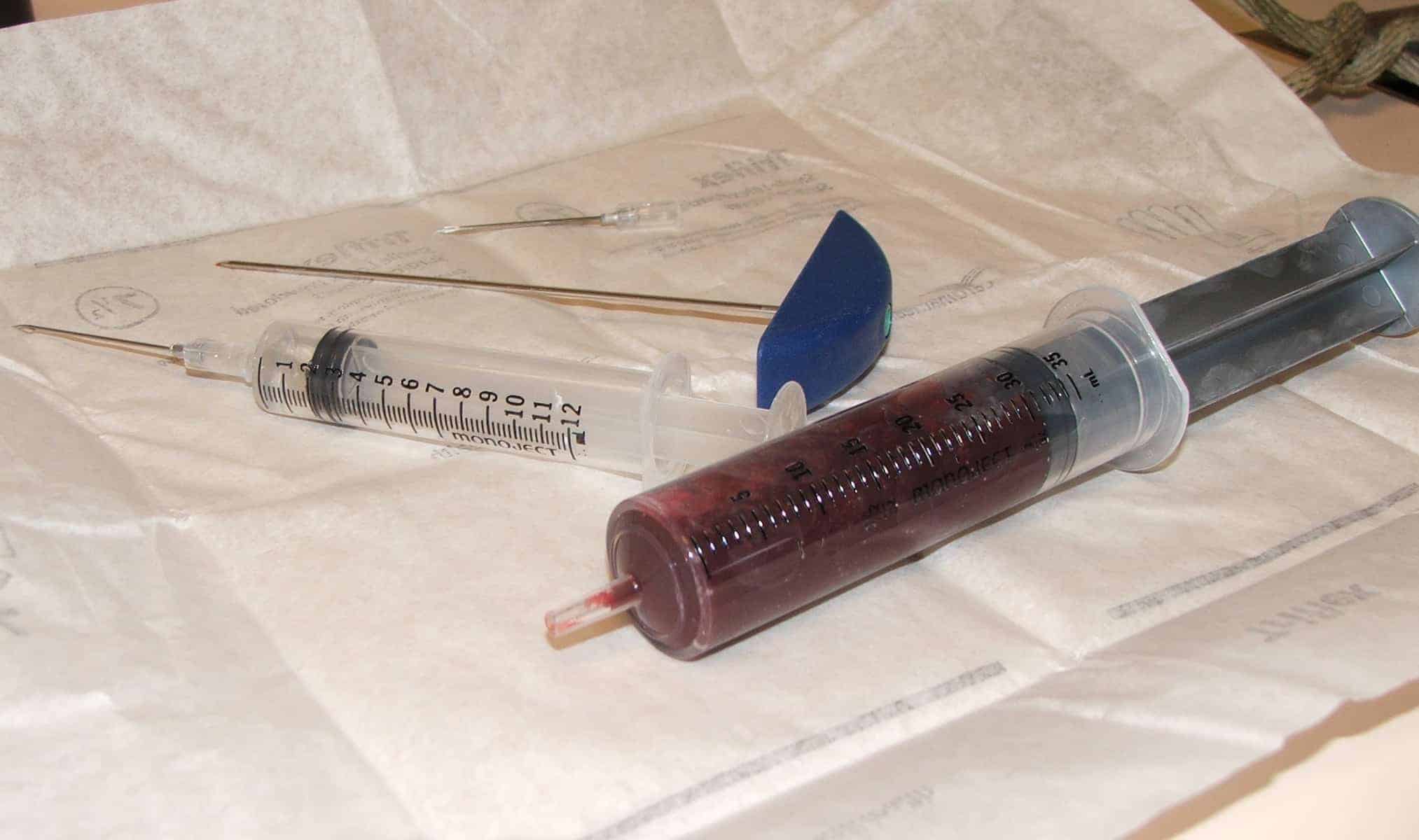Stem Cells or PRP for Equine Tendon and Ligament Injuries?

“Understandably, we’d love to be able to regenerate damaged tissues, because the process of healing through fibrosis (scarring) results in dysfunctional tissue (i.e., a stiffer tendon),” he said. “They heal, but not in a way that’s optimal for the function of the tissue.”
Tendon and ligament injuries have been early targets of regenerative therapies due to their ease of delivery, Smith explained. Veterinarians can administer intralesional treatment with either PRP or stem cells in a precise area, thanks to the cavity that often forms when these tissues get injured. They must do so under ultrasound guidance to ensure they place the product into the defect accurately, he said.
These products’ two mechanisms of action that can aid healing are either via the delivery of growth factors or modulating the inflammatory process that gives rise to fibrous scarring. But, reiterated Smith, studies showing they truly have beneficial effects are lacking.
Suitable Cases for Treatment
Some tendon and ligament injuries have a better chance of benefiting from orthobiologics than others. Smith reviewed tissues he would consider treating with either PRP or MSCs:
Superficial digital flexor tendon (SDFT) Smith said his team has done more orthobiologic work on SDFT injuries than other tendon and ligament issues because they’re well-contained (you need contained disruption to the tendon or ligament to prevent the product from leaking out), common, and have a high risk of reinjury. These injuries, he said, are most appropriate for the use of a therapeutic product administered intralesionally.
Suspensory ligaments Smith said he uses orthobiologics primarily for acute suspensory body and branch injuries that resemble SDFT injuries. He tends to avoid injecting proximal suspensory ligament injuries, which have more complex pathology involving different structures and usually lack a central defect.
Mid-substance deep digital flexor tendon (DDFT) Smith said he’ll reach for orthobiologics in these cases if he’s sure the associated synovial cavity (tendon sheath or bursa) is not involved, because those injuries typically have a poor prognosis.
Distal interphalangeal (coffin) joint collateral ligaments “These have a poor prognosis with normal conservative management, so there’s a keenness to try to treat them with something,” Smith said, adding, however, they’re not always injectable and require MRI guidance to place accurately.
Unsuitable cases for treatment include:
- Chronic disease with no central defect. “You’re going to disrupt the tissue by trying to inject it,” said Smith.
- Lesions that communicate with the synovial cavity.
- Acute traumatic lesions, which often disrupt the surface, so the lesion is not contained. These can become treatable once granulation tissue has formed.
- Poorly accessible lesions (e.g., in the foot), which make the accurate implantation of these products difficult.
How To Choose Between PRP and MSCs
Given the lack of research supporting orthobiologics’ use, how do veterinarians select a tendon or ligament therapy? While vets can use the therapies interchangeably, Smith listed key factors governing the choice between PRP and stem cells:
Veterinarian preference “In reality, this is the most common reason,” he said.
Efficacy Evidence-based medicine should be the most important reason for choosing a product, he said. “In my opinion, stem cells still have the best evidence for treatment of tendon injuries, but that evidence is only for SDFT injuries,” Smith stated. “We know less about them in other structures, although the healing process is often very similar.”
He also considers stem cells to be most suitable for severe injuries that carry poor prognoses.
As for PRP, Smith said evidence for its efficacy is mainly limited to experimental studies showing an improvement in tissue organization.
He urged veterinarians to also consider the quality of different products and preparations, as “there’s a whole host of different preparations for each of these products.”
Stage of the disease process “More chronic, nonhealing lesions may benefit from a growth factor treatment like PRP, rather than MSCs, to get the lesions to fill in.
Circumstances of use Veterinarians should consider whether they plan to perform an elective procedure in the standing horse or need a product to administer intra-operatively. In the latter case, they require a rapid horse-side option (such as PRP or minimally manipulated stem cell products) rather than a stem cell product that needs to be cultured in the lab for two weeks, said Smith.
Cost PRP is significantly cheaper than cultured MSCs. With allogeneic MSC products (which come from another horse, offering the potential for off-the-shelf availability but which are currently only available for the treatment of joint disease) starting to come on the market, however, stem cells’ price might come down, said Smith.
Ease of use Cultured autologous MSCs (those collected from and used in the same patient) require a two-stage process that necessitates aspirating bone marrow from the horse’s sternum. This takes more time and a higher level of expertise than PRP. Again, said Smith, allogeneic MSC products might avoid this two-stage process in the future.
These last two factors—cost and ease of use—said Smith, are the ones that seem to affect decision-making most.
Take-Home Message
Smith says MSCs are his first choice for moderate to severe SDFT injuries and similar injuries in other tendons and ligaments. “PRP is suitable for intraoperative use that requires horse-side preparation, poorly healing lesions, and when cost is a limitation,” he said.
He added that both PRP and stems cells are used commonly for contained tendon and ligament lesions diagnosed via ultrasound. However, veterinarians should use them with caution given their limited evidence of efficacy and as part of an appropriate rehabilitation strategy.

Written by:
Alexandra Beckstett
Related Articles
Stay on top of the most recent Horse Health news with












